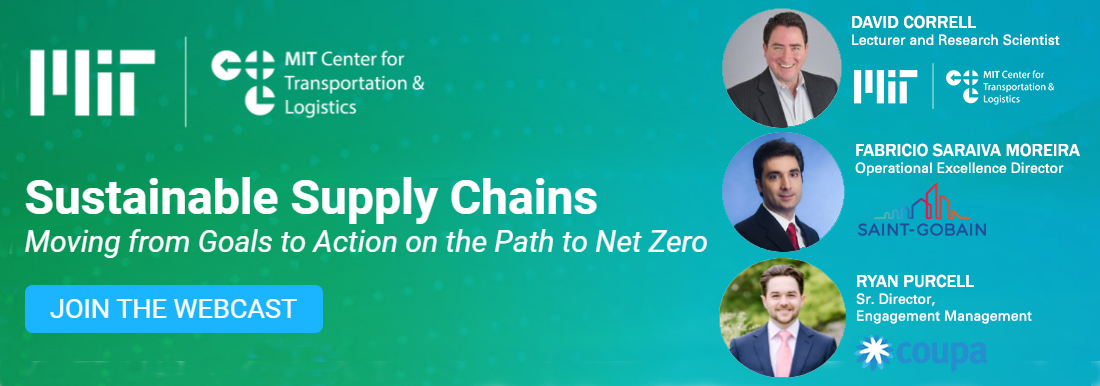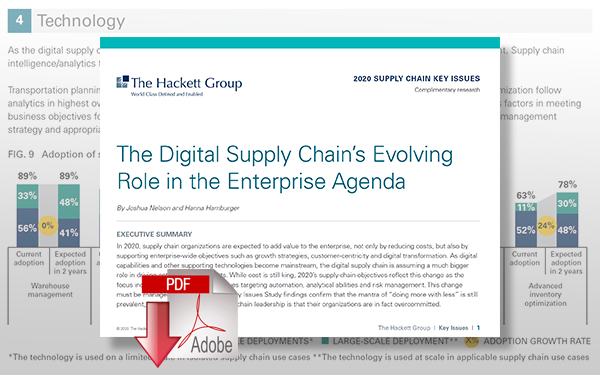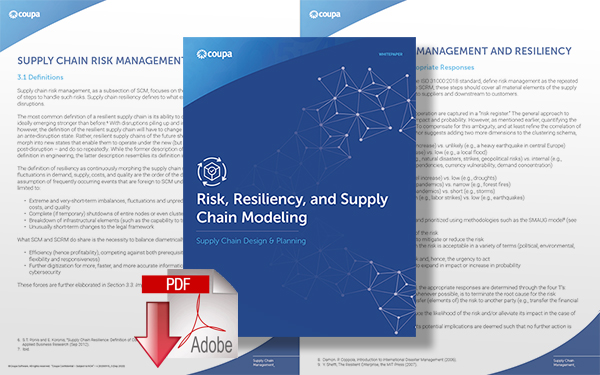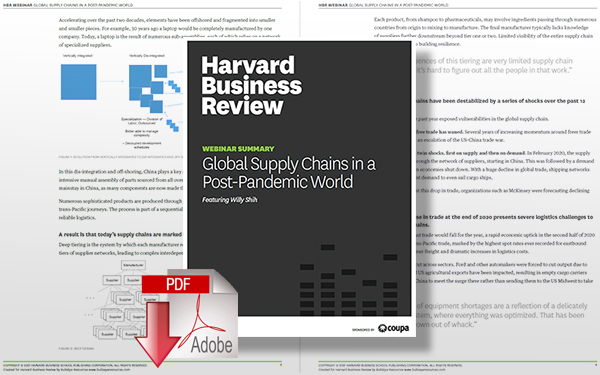The Future of Global Supply Chains & Sustainable Operations

Sustainable operations are changing, and we’re seeing a shift from a pure lowest-cost focus to one of sustainable supply chains that are purposefully designed around diverse performance metrics.
Sustainable Supply Chains
Did you know that it takes around 2,700 liters of water to create a single cotton shirt? This amount of water is equivalent to 900 days of one person’s consumption. But where is it consumed?
It’s used in a variety of places. It starts in the field when the cotton crop is irrigated and then continues when wet processing the raw cotton fibers through cleaning, and finally when dying the finished yarn or fabric. If you were to build this supply chain, would you know where - and how much - water was consumed and in which steps?
A few years ago this may not have been important to your firm. This is likely because many indirect impacts were hard to identify and quantify, or they were not a priority as companies focused on removing cost from their supply chains. This direction is changing, and we’re seeing a shift from a pure lowest-cost focus to one of sustainable supply chains that are purposefully designed around diverse performance metrics.
The Hidden Cost of Goods
Do you know:
- How much waste you create?
- How many greenhouse gases you produce?
- How reliant you are on fossil fuels to move your goods?
- How eco-conscious your suppliers are?
Balancing the cost of goods and the diverse metrics to monitor your efforts requires you to create a sustainable supply chain - one that will protect your consumers, the environment, and the brand value that you’ve created. When Levi’s set out to address use of water in their finishing processes, they were able to develop their WaterLess initiative that removed 96% of water consumption from jeans finishing.
To change our supply chains, different ways of thinking will be necessary.
Get the latest on global supply chains in a post-pandemic world by listening to this on-demand HBR webinar featuring Willy Shih, Professor at Harvard Business School.
Designing for Lowest Cost to Serve
From the 1990s through the mid-2010s, getting cost out of your supply chain was the singular mission. As the supply chain encompasses a large portion of the spend in many organizations, this was a natural target for focused fiscal controls. However, this often came with a tangible tradeoff as it introduced harmful ecological outcomes, lengthened transportation lanes, and was generally unconcerned with byproducts of production. To scale and stay competitive, companies pursued the lowest-cost supply chains for sound, rational business principles as it made sense in times of fierce market competition to remove cost, improve margins, and increase shareholder value. Some of this was also driven by the financial-centric KPIs by which these companies were graded and that investors rewarded.
The old adage of ‘what is measured gets managed’ was the rule. When attempting to balance the complexity in defining impacts with the difficulty in creating measurements, tracking the data, and being able to reliably show the impact of a global supply chain, supply chain planners went with what they knew. Fragmented supply chains - ones with a combination of direct control and outsourced services - along with global footprints and emerging data technologies meant starting these early initiatives might have been difficult, imprecise, incomplete, or all of the above.
It used to make sense, but the nature of competition and access to data has evolved, making more sustainable supply chains attainable.
Due to efforts in public records accessibility, transparency in multi-echelon global supply chains, and public and nonprofit advocacy, it has become increasingly easy to get the information needed to assess your direct supply chain’s current sustainability and to incorporate good benchmarks for estimating the impact of your end-to-end value chain. With this increased access to information, what can we measure?
It used to make sense, but the nature of competition and access to data has evolved, making more sustainable supply chains attainable.
Supply Chains Create Diverse and Manageable Impacts
Supply chains create a wide variety of outputs that offer opportunities for reduction or elimination as you pursue a better sustainability footprint.
Emissions
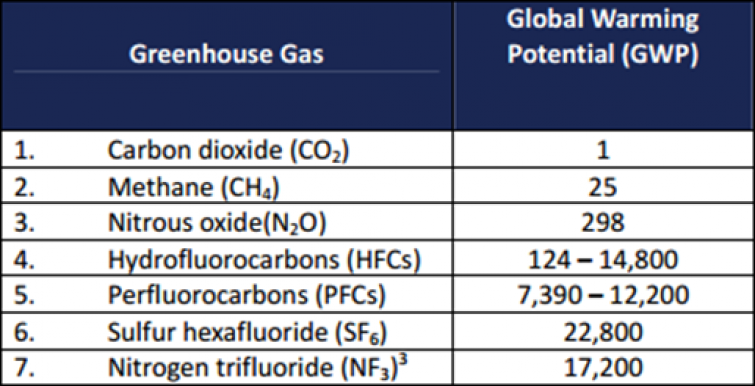
Emissions comprise a huge category of greenhouse- and ozone-depleting gases that companies can manage and control. While CO2 is generally considered the shorthand, there are actually a number of common exhausts such as hydrofluorocarbons which are regulated and incredibly damaging. Analyses are often constrained to the direct impact of transportation, but a thorough analysis will incorporate the production environments as well. For example, coffee roasting results in a large amount of nitrous oxide as an unavoidable byproduct of the process.
Packaging
The consumption of packaging is of great concern for an environmentally conscious supply chain. Are you using virgin materials? How much is going into the product and how much is in your shipping containers? Circular supply chains recapture as much of this material as possible and reuse it directly - pallets and filler materials - or have strong recycling and repurposing programs when not. The public’s reduced preference of plastics due to their often single-pass life in a supply chain is imparting pressure on firms to reduce or eliminate it entirely. This is an overlooked part of the process and primed for reengineering for the greater good.
Byproducts
Byproducts have gained an incredible focus in recent years. Remember that cotton t-shirt? The water used in its creation isn’t necessarily lost. Improvements in recapture and filtration technology means that water may not be single pass anymore. When it leaves the facility, good environmental stewards have factored that in and removed large quantities of contamination. Unfortunately, not all byproducts can be mitigated or removed from today’s processes. You should address the reality of the process even if there is no immediate solution for it and measure these materials.
These categories are among the vast field of opportunity to identify, measure, and report on the impacts of supply chains. Getting critical on identifying not just what you do, who you serve, and what you serve them, but also the knock-on effects that are so often overlooked, will prime an organization to answer the next questions on the path to a more sustainable supply chain: what’s important, and, where do we begin?
Explore what enterprises expect from the modern supply chain by reading this whitepaper by The Hackett Group, The Digital Supply Chain’s Evolving Role In The Enterprise Agenda.
Companies and Consumers Seek Change
There isn’t a single narrative on the necessity of this change. Many companies approach this as necessary to align with their own internally driven core values and brand. Other companies respond to external pressures from changing social demands or the direct activist intervention of their investors. Whatever the reason, the rallying cry of sustainable supply base practices are becoming center to many companies' stated goals for the next 10 to 20 years as they seek the middle path of delivering on customer needs while doing so in as environmentally friendly a way as possible. Firms from IKEA and BMW to P&G and Apple have not just identified targets but also announced specific programs to get there.
Tuesday, September 14, 2021 | 9A PT / 12P ET
Across industries and geographies there has been growing interest in sustainable business practices, as well as increasingly aggressive goals set by companies to achieve net zero emissions. But knowing WHAT you want to accomplish is just the first step on the path, the next step is to determine HOW.
Join us on September 14 to hear MIT CTL’s Dave Correll, Saint-Gobain’s Fabricio Saraiva Moreira, and Coupa’s Ryan Purcell as they discuss:
- Recent MIT CTL research highlighting how the sustainability priorities for global supply chains have (and have not!) changed as a result of the pandemic
- The approach taken by Saint-Gobain in Latin America to embed sustainability considerations into all of their business and supply chain activities
- How Coupa's Sustainable Business Spend Management capabilities support our customers in achieving their Environmental, Social, and Corporate Governance (ESG) goals
Can't join live? Register here, and we'll send you the recording after the event!
Consumers are becoming more mindful of sustainable supply chain practices. A survey identified that 47 percent of internet users had dropped products or services that didn’t align with their personal values. Many brands have responded in kind by increasing the amount of transparency reporting on their programs, creating new product lines based around eco-friendly materials or improved environmental impacts, and in their creation of near-term emissions zero or neutral goals.
Operating a globally-distributed network requires awareness of and compliance for a number of environmental regulations. Recent trends in the E.U. specify that regardless of where your headquarters resides, you will have to comply with policies that are specific to where your goods are ultimately sourced from or sold into. The 2013 Timber and 2018 Conflict Mineral laws in the E.U. bloc added a degree of complexity to managing supply chains because it mandates careful tracking and reporting on country of origin as well as the processes by which harvesting occurred. This too extends into how greenhouse gas (GHG) emissions are tracked. The E.U., Canada, and the United States have all developed guidance and measurement criteria for Scopes 1, 2, and 3 emissions tracking and reporting.
Whatever motivates your goals, today’s consumers will most likely support and reward your sustainability efforts.
A Recipe for Sustainable Supply Chains
A structured approach to avoidance, monitoring, detection, and mitigation is the recipe to move sustainability from aspiration to an implemented competitive advantage. These are some of the best practices as you begin to change your operations:
1. Find and recruit diverse support
All pushes for sustainability are driven by executive buy-in, employee advocacy, and consumer commitment. Generate a goal and ensure that everyone from leadership to the people making better decisions are committed to your firm's role as a change agent.
2. Measure and benchmark
There is a reason we continue to say, “That which is measured gets managed” - it works. Model your supply chain, attribute metrics to activities, create waste assessments in BOMs, and baseline your footprints. Build transparent assessment and the more comprehensive your measures and acknowledgements become, the more opportunities you’ll identify for improvement.
3. Include your suppliers
Mapping diverse and complex global supply chains requires honest partnerships. Information transparency isn’t perfect and the best way to get information is to ask for it. Work with your suppliers to acquire Scope 3 measures and collaborate with them on the mitigation of those impacts. Drive stronger partnerships with shared responsibilities and identify who your best suppliers are as you pursue sustainable supply chain goals.
4. Balance KPIs in models and score cards
There can be a strong push toward trying to do everything, yet a mature organization will find the optimal balance between increasing cost and reducing impacts. Some initiatives will save on both as the cost of extended supply chains is often matched by a focus on cost per unit. Adjusting the balance between cost controls and impact reductions provides a menu of potential options for creating a series of improvement initiatives.
5. Set targets and prioritize quick wins
Identify the quick wins and the simplest changes on your path to build a sustainable supply chain. This can give credibility to budding programs; for example, in many instances it has been found that up to 40% reduction in harmful emissions can be delivered for a 2%–4% increase in the cost of production. Ideally, make a public statement of the goal and demonstrate the commitment.
6. S.M.A.R.T. goals
The same logic of personal goals applies to sustainability initiatives. Make sure goals are S.M.A.R.T.: specific, measurable, attainable, relevant, and time-bound, otherwise they can fail to create the behavioral change that delivers results.
7. Sustain the sustainability
Design sustainable supply chain programs that not only correct the existing course, but also put in safeguards to monitor your supply chain and raise flags when something is amiss. For example:
- Has a supplier's behavior changed?
- Have your country of origins declarations shifted?
- Are you reading concerning news sentiment shifts?
- Has your model shown that your transactional activity would cause increased emissions or waste?
Trust, but verify, continuously.
8. Integrate with product development and onboarding
Problems you don’t make don’t have to be fixed. Proactively add elements to your contracts and supplier onboarding, setting out clear values, goals, and expected adherence to them. Create thoughtful recipes and bills of material that remove undesirable components and raw materials and consider the sourcing of the ones you keep in. Do product sampling and facility tours early. Implement irregular, asynchronous auditing practices. Implement machine learning tools to detect trends in information or malfeasance in provenance.
Sustainable Course Correction is Gaining Speed
Sustainability principles are not a well developed muscle that supply chains have perfected since the Industrial Revolution. Developing a more sustainable supply chain is new, it’s challenging, and there will be missteps, but the benefits are real. Many firms jumped early to driving measurable success and are now doubling down on their programs. IKEA, Mars, Brambles, and others are not just setting goals but meeting them and going further. In Brambles 2025 sustainability vision, the company is proposing not just mitigation and elimination but moving into a phase of “regenerative supply chain” where they become carbon negative and forest additive.
Consumers are willing to abandon brands that do not change and will pay a premium for an ethically and sustainably sourced product. There is a shift in socially-conscious investing that is also altering the financial mix of these programs. Legislation reintroduced this year to improve transparency to ESG focused funds makes it clear where retirements are invested, and allows for the creation of purely ESG investment vehicles. So while consumers are speaking with their wallets, they are about to have fund managers who represent them, speaking with their combined retirements as well. When paired with investor activism, top-down change can be driven by a firm’s future access to growth capital.
Sustainability is good for growth too. Brands that position sustainability demonstrated four percent growth compared to one percent growth for brands that did not embrace these principles. This trend is also disproportionately driven by younger consumers such as Millennials and Generation Z who actively seek out sustainable products and companies. Consumer willingness to bear the cost of these programs can help overcome the balance sheet hesitancy that holds companies back. While doing the right thing isn’t free, it will be embraced by a motivated consumer base.
Learn how proactive risk mitigation begins at the very foundation of your global supply chain network design, read our whitepaper: Risk, Resiliency, and Supply Chain Modeling.
Sustainable Together with Coupa
With the growing importance of sustainable supply chains, the market is moving away from lowest-cost as the only way forward. Improved information systems that tie together the entire spend management process from acquisition to disposition enables supply chain analysis only dreamed of in previous years.
As the leader in Business Spend Management (BSM), Coupa embraces the challenge of extracting the maximum amount of value from this information bounty. The Coupa platform’s end-to-end, open architecture helps tackle the challenges of piecing together the whole picture from distributed functional systems of record. Accelerated model building frameworks enable Coupa customers to reduce time lag and process friction to a minimum. Creating functionally focused interfaces that are connected to prescriptive intelligence accelerates the speed of turning identified opportunity into behavioral change. Modern modeling tools powered by artificial intelligence and scalable cloud infrastructure make the largest problems solvable and - better yet - ensure your information is on a living breathing platform that drives awareness and empowers change.
With Coupa’s robust, cloud-delivered collaborative applications, your planning team in Germany has the same information as your production management team in Brazil that is delivering goods to your retail stores in Australia. Explore what it means to localize and shorten your supply chain. Introduce new suppliers to shorten lanes and reduce emissions impacts. Source and onboard alternative packing materials and then simulate what this means for your production sites.
The largest resistance to change in an organization - your functional executors - can be overcome by making change easy and baked into the process. Each user has the power to reconsider the right flow path dynamically. This approach also ensures that no decisions are made in a vacuum and that decisions are harmonized against the rest of your value chain. Individual decisions, empowered by global awareness, driving decisions in support of your goals.
Let’s work together to ensure that our interconnected global supply chains are as sustainable as possible.
Join us on September 14, 2021, to hear MIT CTL’s Dave Correll, Saint-Gobain’s Fabricio Saraiva Moreira, and Coupa’s Ryan Purcell as they discuss Sustainable Supply Chains.
Related Resources
Digital Supply Chain’s Evolving Role in the Enterprise Agenda
The Hackett Group 2020 Key Issues Study findings confirm that the mantra of “doing more with less” is still prevalent, but the top concern of supply chain leadership is that their organizations are in fact overcommitted, AI analytics to enable a more agile supply chain. Download Now!
Risk, Resiliency, and Supply Chain Modeling
This paper first examines why existing supply chain management practices do not naturally develop resilient supply chains and why some of the existing supply chain processes are not suitable for addressing such risks and required responses. Download Now!
Global Supply Chains in a Post-Pandemic World
In this webinar summary, Willy Shih, Robert and Jane Cizik Professor of Management Practice in Business Administration at Harvard Business School, shares insights into how global supply chains came to be the way they are and how their vulnerability has been revealed through numerous crises. Download Now!
More Resources from Coupa
Related Article: Riding the Pandemic’s Wave of Change through Retail Supply Chain Innovation
Article Topics
Coupa News & Resources
How Microsoft Improved ESG & Sustainable Spending Working Together with Community.ai Capabilities Supply Chain Agility in an Ever-Changing World How Sourcing Can Respond in Dynamic Markets to Drive Supply Chain Value Build Resilience in Supply Chains by Modeling & Designing Multiple Demand Futures Beyond Disruptions: Building the Next Generation of Resilient Supply Chains 6 Truths About Business Spend Management Technology 5 Ways Supply Chains Can Flourish in an Inflationary World More CoupaLatest in Supply Chain
Happy Returns Partners With Shein and Forever 21 to Simplify Returns Baltimore Opens 45-Foot Deep Channel Following Bridge Collapse El Paso Border Delays Cost Juarez $32 Million Per Day in Economic Losses Ranking the World’s 10 Biggest Supply Chains The Top 10 Risks Facing Supply Chain Professionals Walmart’s Latest Service: Ultra Late-Night Delivery Dollar Tree’s Oklahoma Distribution Center Decimated by Tornado More Supply Chain

